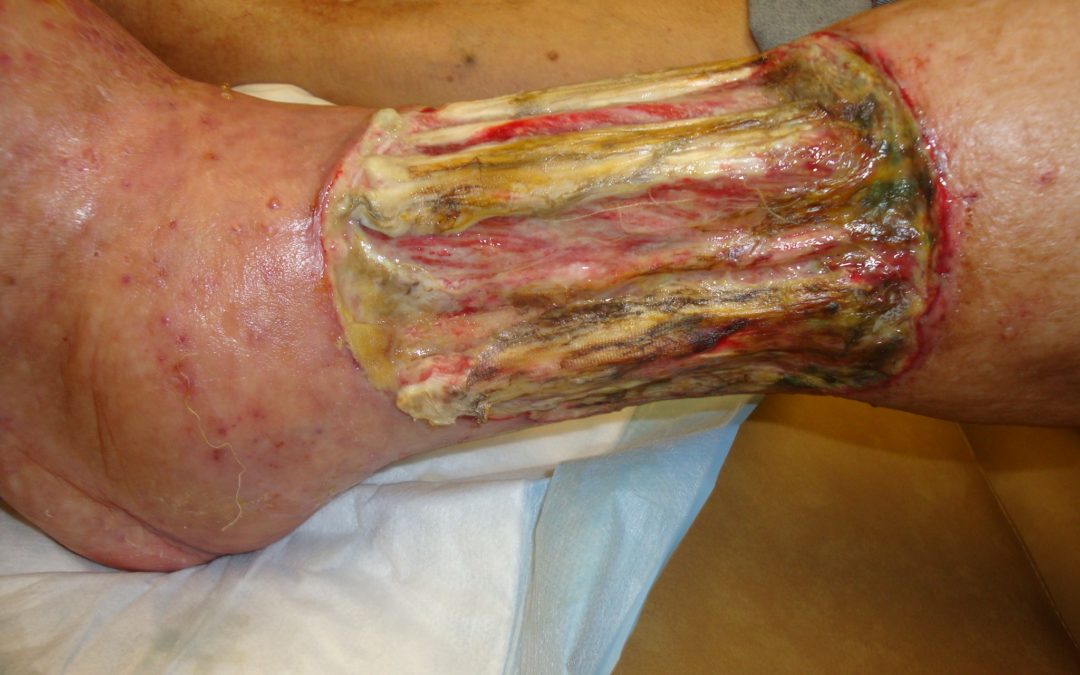In my 30-plus years of practicing wound care, I have developed an unwelcome amount of experience with Pyoderma gangrenosum. It’s not been uncommon for me to have 8 patients with PG at any given time (and I’m sure I’ve missed some).
PG can range in spectrum from a smoldering but refractory small lesion to a limb threatening debacle. Some patients with PG died of their associated comorbid diseases. In one of my patients, amputation was the best option- but amputation would have been an option for others – if they had lived. This photo is of a patient who’s PG was a paraneoplastic syndrome from the sarcoma that took his life.
Many dermatologists have told me they’ve never seen a single case of PG. Wound care practitioners may have more experience with PG than the average dermatologist and that’s why dermatologist Dr. Alex Ortega-Loyoza has asked for our help.
Dr. Ortega has been researching PG for many years. He recently performed a review of the literature which suggested that PG may lead to amputation far more often than commonly thought. However, his dermatology colleagues were skeptical that this is the case.
The fact is, wound care doctors are a better source of information on this subject than dermatologists. This month, he’s the guest editor for my column in Today’s Wound Clinic.
Read Dr. Ortega’s brief editorial on the subject of PG and amputation, and take the quick survey!
If anyone would know the truth about PG and amputation – it’s us.
Caroline Fife

Dr. Fife is a world renowned wound care physician dedicated to improving patient outcomes through quality driven care. Please visit my blog at CarolineFifeMD.com and my Youtube channel at https://www.youtube.com/c/carolinefifemd/videos
The opinions, comments, and content expressed or implied in my statements are solely my own and do not necessarily reflect the position or views of Intellicure or any of the boards on which I serve.



